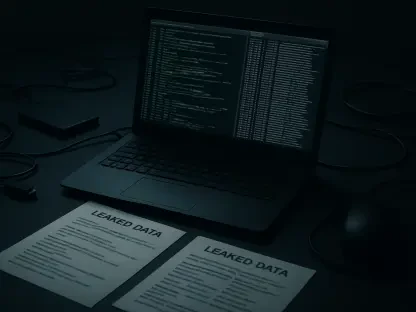As we approach 2025, cyber threats are more prevalent than ever, and the evolution of AI technology has significantly contributed to the sophistication of these scams. Recently, the FBI, together with Google, has released important warnings urging users of Gmail, Outlook, Apple Mail, and other email services to implement essential safety precautions to protect themselves. The FBI’s new campaign is designed to make email users more aware of potential threats and scams, especially during the holiday season when phishing attacks tend to spike. This article provides crucial steps to safeguard your email against increasingly sophisticated attacks, as advised by the FBI and Google’s security team.
1. Verify the Sender’s Email Address
One of the first steps in identifying a phishing attack is to carefully verify the sender’s email address. Scammers are adept at crafting email addresses that closely resemble those from legitimate companies to trick users into believing the email is authentic. For example, an email might come from “[email protected]” or “[email protected],” but upon closer examination, you may find slight variations like “[email protected]” or “[email protected].” These subtle differences can easily be overlooked if not diligently checked. Always click on the sender’s name to reveal the full email address. If there’s any doubt, it’s best to assume the email is suspicious.
The increased use of AI technologies by cybercriminals has made these fraudulent emails even more convincing. They can replicate logos, signatures, and other visual elements, making it harder to differentiate between genuine and malicious emails. Verified email addresses should come from the official domain of the company and not from a complex or misleading variant. This simple but effective step can prevent a lot of potential damage.
2. Inspect Any URL Before Clicking or Engaging
Phishing attempts often use malicious URLs to lure victims into providing sensitive information. Before clicking on any link within an email, hover your cursor over it to display the URL. This helps you determine if the link directs to a legitimate website or a phony site designed to harvest your details. Authentic company URLs generally follow a standard format. For example, an official PayPal link should be from “paypal.com” and not from something misleading like “paypal-verify.com.” This precaution is particularly important since AI can create URLs and landing pages that look strikingly real.
Another strategy is to manually enter the web address into your browser instead of clicking on email links. This further minimizes the risk of ending up on a fraudulent site. If you’re not sure about a URL, using search engines to find the company’s official web page adds an extra layer of security. When done correctly, these steps can significantly decrease your exposure to phishing scams.
3. Review the Spelling and Grammar of the Email and URL
Carefully reviewing the spelling and grammar used in emails and URLs is another crucial step in identifying potential scams. Despite the sophistication of AI, many phishing emails still contain noticeable grammatical errors, odd phrasing, or misspelled words because they are often generated quickly and in bulk. A legitimate company takes great care in communications, ensuring that emails are clear, coherent, and free of errors. If an email seems off, scrutinize it closely for any signs of poor language use.
Examining the URL for spelling errors is also essential. Phishing sites may have URLs that are almost identical to official ones, differing only by a letter or character. These small discrepancies are easy to miss but can be a tell-tale sign of a scam. For example, a scam URL could be “m1crosoft.com” instead of “microsoft.com.” Being vigilant about these inconsistencies can help prevent falling victim to phishing attempts.
4. Remember That Companies Typically Don’t Ask for Your Username or Password via Email
Legitimate companies rarely, if ever, will ask you to provide personal information like usernames or passwords through email. This common tactic used by scammers to obtain sensitive details under the guise of verification is a massive red flag. If you receive an unsolicited email requesting such information, it’s best to contact the company directly through official channels to confirm the request’s authenticity.
Understanding that these types of requests are highly unusual can be an effective defense against phishing. Reputable companies will use secure methods for account verification and will usually prompt you to log into your account via their secure website rather than request information through an email. Awareness of this policy is crucial in maintaining personal security online.
5. Avoid Clicking on Anything in an Unsolicited Email or Text Message
One of the simplest but most effective ways to avoid phishing attacks is to refrain from clicking on links or downloading attachments from unsolicited emails or text messages. Even if the email seems legitimate, it’s safer to navigate to the website by typing the address into your browser manually. This extra step can prevent you from being redirected to a malicious site designed to steal your information.
Attachments in unsolicited emails are often used to deliver malware, which can compromise your device and personal information. If you don’t recognize the sender or weren’t expecting an attachment, it’s best to delete the email. Practicing caution and resisting the urge to click on unsolicited content can save you from potentially devastating cyber attacks.
6. Look Up the Company’s Phone Number Independently and Call to Verify the Request
If an email or text message raises suspicions, it’s a good practice to independently verify the authenticity of the request by directly contacting the company. Use the phone number listed on the company’s official website rather than the one provided in the potentially fraudulent message. Phishing emails often include fake contact details to further deceive recipients into thinking the scam is legitimate.
Calling the company directly allows you to clarify any doubts and ensure that you are not providing sensitive information to cybercriminals. This method adds an extra layer of verification, preventing you from falling victim to well-crafted scams that could otherwise seem convincing. Trusting your instincts and opting to verify personally puts you a step ahead in protecting your information.
7. Scrutinize the Email Address, URL, and Spelling in Any Correspondence
Consistent scrutiny of details in emails such as the sender’s address, URLs, and the content’s spelling and grammar is a crucial part of safe email practices. Scammers rely on these details to deceive users into believing that an email is from a trusted source, and even minor irregularities can reveal a phishing attempt. Always treat unexpected or unusual emails with caution, particularly those requesting sensitive information.
Regularly scrutinizing the details of emails can become a habit that fortifies your defenses against phishing scams. The more meticulous you are in identifying these inconsistencies, the less likely you are to fall prey to increasingly sophisticated cyberattacks. This proactive approach is key in maintaining digital security.
8. Be Cautious with Downloads and Never Open Email Attachments from Unknown Senders
Email attachments are a common method used by attackers to distribute malware. To safeguard your personal and professional data, it’s imperative to exercise caution when downloading files, particularly from unknown senders. Malware can take many forms, including viruses, ransomware, and spyware, which can severely compromise your device and data.
Sometimes, even attachments from known contacts can be risky if their email account has been compromised. When in doubt, verify the attachment’s legitimacy by contacting the sender via alternative means. Being cautious about what you download and open on your device is a fundamental aspect of cybersecurity that can prevent many potential threats.
9. Enable Two-Factor or Multi-Factor Authentication on Any Account That Supports It, and Never Disable It
Enabling two-factor authentication (2FA) or multi-factor authentication (MFA) on your online accounts adds an important layer of security. This system requires you to validate your identity using a second method, such as a text message code or authentication app, in addition to your password. Even if someone gains access to your password, they would still need the secondary information to access your account.
Never disable these security features, even if they seem inconvenient. They are one of the most effective ways to protect sensitive information from unauthorized access. Setting up 2FA or MFA is straightforward and offers significant security benefits, making it well worth the effort.
10. Be Mindful of the Information You Share Online or on Social Media
As we near 2025, the frequency and sophistication of cyber threats continue to rise, amplified by advances in AI technology. In response, the FBI and Google have issued significant warnings for users of popular email services such as Gmail, Outlook, and Apple Mail. They emphasize the necessity of implementing key safety measures to protect against these escalating threats.
The FBI’s latest initiative aims to heighten awareness among email users about potential phishing scams, which are particularly rampant during the holiday season. These scams often involve attempts to obtain sensitive information by masquerading as trustworthy entities through email.
Highlighted in this campaign are critical steps that users can take to safeguard their email accounts from sophisticated attacks. Suggested measures include enabling two-factor authentication, being vigilant about unexpected email attachments, and avoiding clicking on suspicious links. The FBI and Google’s security teams recommend regularly updating passwords and ensuring they are strong and unique for different accounts.
By following these guidelines, email users can significantly reduce their risk of falling victim to cyber attacks. It is imperative to stay informed and cautious, especially as cybercriminals become more adept at exploiting technological advancements. Taking proactive steps now can help ensure your personal and financial information remains secure.









